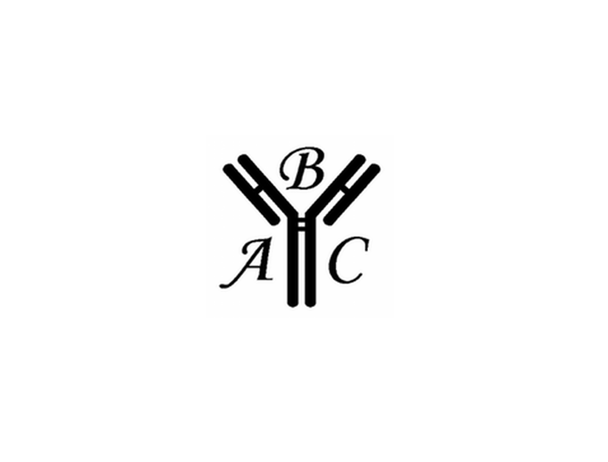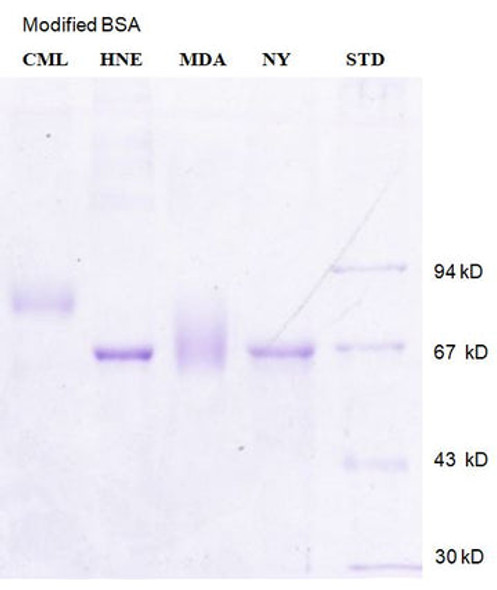Description
Nitrated Bovine Serum Albumin (Nitrated BSA) | ABMC-P25
| Concentration: | 1 mg / ml, determined by the Lowry method |
| Source: | Bovine Serum Albumin was purchased from Boehringer Mannheim. Tyrosine residues in BSA were modified to nitrotyrosine to form a nitrotyrosine BSA. |
| Buffer: | In 75 mM PBS, 75 M NaCl, 0.5 mM EDTA, 0.02 % NaN3, pH 7.2. |
| Storage: | -20°C for long-term storage, 4°C for short-term storage. Aliquot to avoid repeated thaw and freeze. |
*The products are for research or manufacturing use only, not for use in human therapeutic or diagnostic applications.
IMPORTANCE
Nitrotyrosine originates as tyrosine in both a free and protein-bound form which plays a key role in the process of oxidation as seen in atherosclerosis and other inflammatory conditions including active lupus, influenza, pancreatitis, ulcerative colitis, and Crohn’s disease.
The protein-bound form that is involved in atherosclerosis is attached to LDL. This molecule is then nitrated to form the biologically active nitrotyrosine. The nitrate moiety is donated by the reactive nitrating intermediate peroxynitrite (ONOO-) (Graham et al., 1993). Peroxynitrite in turn is formed from MPO-dependent oxidation of nitric oxide (NO). This MPO-mediated oxidation process occurs in a highly efficient manner in human serum (Pennathur, 2004).
Once modified, the nitrated form of LDL is then collected and consumed by macrophages via phagocytosis. While LDL− may be viewed as a circulating, atherogenic form of LDL in vivo, study has shown that tyrosine nitration and lipid peroxide together are responsible for the unfolding of α-helices inherent in LDL- formation. Oxidatively- modified low-density lipoprotein (LDL) is involved in the initiation and progression of atherosclerosis. (Hamilton et al., 2008)













